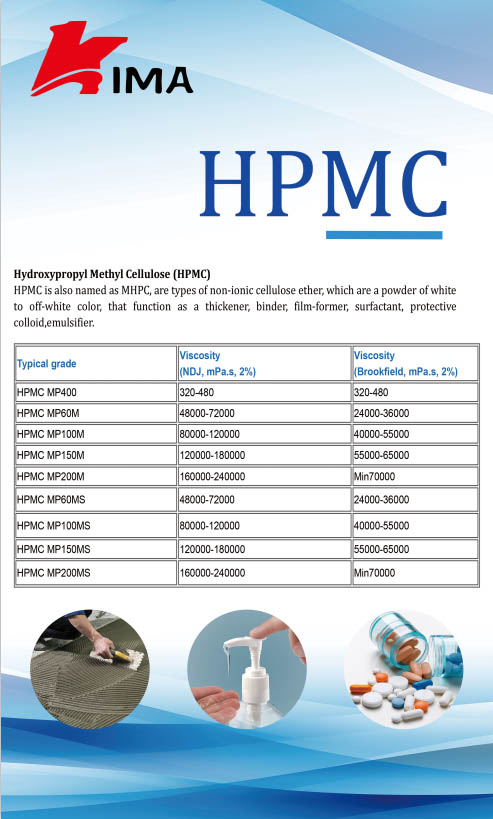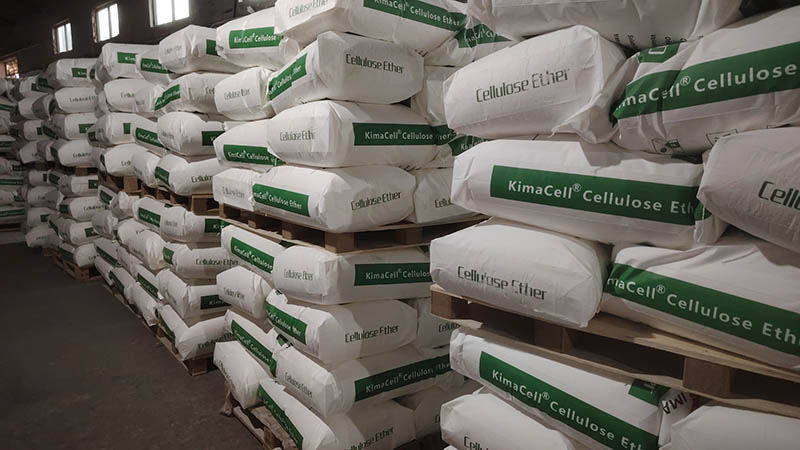Hydroxypropyl methylcellulose (HPMC) is a water-soluble polymer compound made by chemically modifying natural cellulose. It has good water solubility, film-forming properties, thickening properties and stability, and is widely used in medicine, food, cosmetics, construction, coatings and other industries. Due to the particularity of its chemical structure, the biodegradability of hydroxypropyl methylcellulose in the environment has become one of the research hotspots.

1. Chemical structure of hydroxypropyl methylcellulose
HPMC is a polymer compound obtained by hydroxypropylation (introduction of hydroxypropyl groups) and methylation (introduction of methyl groups) of natural cellulose. Cellulose itself is a polysaccharide composed of β-D-glucose units connected by β-1,4 glycosidic bonds, which has good biodegradability. However, the chemical modification of HPMC changes its structure, increases its water solubility and hydrophilicity, and thus affects the rate and mode of its biodegradation.
2. Overview of biodegradability
Biodegradation refers to the decomposition of organic matter into simple harmless substances (such as water, carbon dioxide, methane, etc.) by microorganisms under suitable environmental conditions using enzymes. For high molecular weight compounds, the degradation process usually requires multiple steps: first, microorganisms attack the macromolecular structure to produce low molecular weight compounds; second, the degradation products are further decomposed by microorganisms and finally converted into simple small molecules.
The degradability of HPMC is closely related to its chemical structure, molecular weight, environmental conditions and other factors. Due to the water-soluble groups (such as methyl and hydroxypropyl) introduced during its modification process, HPMC has enhanced water solubility and hydrolysis properties, so its degradation process is usually slow.
3. Factors affecting biodegradation
The biodegradability of HPMC is affected by many factors, mainly including:
Molecular weight:
The higher the molecular weight of HPMC, the more complex its structure, and the slower the degradation process. HPMC with a smaller molecular weight is more easily decomposed by microorganisms.
Ambient temperature and humidity:
Temperature and humidity are important factors affecting the rate of biodegradation. Generally speaking, a warm and humid environment is conducive to the growth and metabolic activities of microorganisms, thereby accelerating the degradation of HPMC.
Types of microorganisms:
Different types of microorganisms have different abilities to degrade HPMC. Some bacteria and fungi (such as white rot fungi) have strong cellulose degradation abilities and may also have a certain effect on the degradation of HPMC.
pH value:
The pH value of the environment will also affect the degradation of HPMC. Higher acidic or alkaline conditions may accelerate the hydrolysis of HPMC, thereby affecting the degradation rate.

Oxygen supply:
Under aerobic conditions, the degradation activities of microorganisms are usually more active, and an environment with sufficient oxygen supply is conducive to the degradation process.
4. Degradation process of HPMC
The biodegradation of HPMC can generally be divided into two stages: hydrolysis and microbial degradation.
Hydrolysis stage
Due to the presence of methyl and hydroxypropyl groups in HPMC molecules, it is easier to hydrolyze than pure cellulose. Water molecules enter the molecular structure of HPMC, cut off some chemical bonds through hydrolysis reactions, and produce some low-molecular products, such as oligosaccharides and monosaccharides. This process provides available substrates for microbial degradation.
Microbial degradation stage
Based on the hydrolysis products, some microorganisms (such as bacteria, fungi, etc.) can further degrade these low-molecular compounds. Through the action of enzymes, microorganisms can convert these products into harmless substances such as carbon dioxide and water. In the natural environment, the degradation of microorganisms is usually slow.

5. Biodegradation time of hydroxypropyl methylcellulose
The biodegradation time of HPMC varies depending on the environmental conditions. Generally, the degradation process of HPMC is relatively slow, and it may take months or even years to be completely degraded in the natural environment.
In a suitable microbial active environment, the degradation time of HPMC may be between a few months and a year, but if the environmental conditions are not good (such as low temperature and insufficient humidity), the degradation time will be extended.
Under industrial composting conditions, the degradation rate of HPMC will be relatively fast, because the compost is rich in organic matter and active microorganisms, which can promote its degradation.
Hydroxypropyl methylcellulose has weak biodegradability and slow degradation rate, which takes months to years, depending on the environmental conditions. Although HPMC can be degraded by microorganisms in the natural environment, the degradation process is relatively slow due to the modification of its molecular structure. Therefore, in order to improve its environmental friendliness, researchers are exploring further modifications of HPMC, or accelerating its degradation in the environment through methods such as copolymerization and adding degradation promoters.
 English
English 日本語
日本語 français
français Deutsch
Deutsch Español
Español italiano
italiano русский
русский português
português العربية
العربية Türkçe
Türkçe Nederland
Nederland






